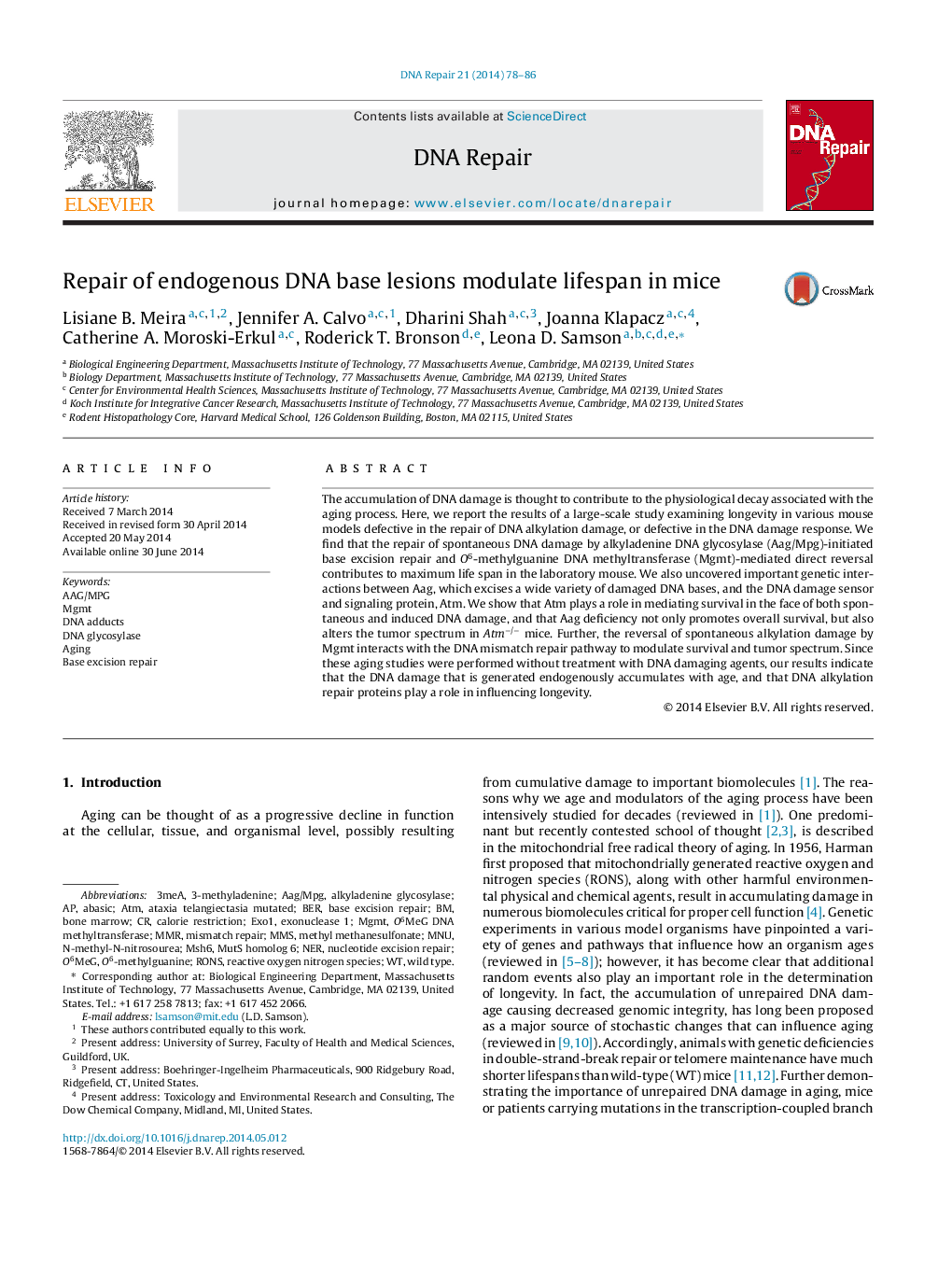| Article ID | Journal | Published Year | Pages | File Type |
|---|---|---|---|---|
| 1980147 | DNA Repair | 2014 | 9 Pages |
•Large-scale mouse aging study examines role for DNA repair and DNA damage response.•Repair of endogenous alkylation damage plays a role in determining longevity.•Atm plays a key role in protecting against detrimental effects of Aag-mediated BER.
The accumulation of DNA damage is thought to contribute to the physiological decay associated with the aging process. Here, we report the results of a large-scale study examining longevity in various mouse models defective in the repair of DNA alkylation damage, or defective in the DNA damage response. We find that the repair of spontaneous DNA damage by alkyladenine DNA glycosylase (Aag/Mpg)-initiated base excision repair and O6-methylguanine DNA methyltransferase (Mgmt)-mediated direct reversal contributes to maximum life span in the laboratory mouse. We also uncovered important genetic interactions between Aag, which excises a wide variety of damaged DNA bases, and the DNA damage sensor and signaling protein, Atm. We show that Atm plays a role in mediating survival in the face of both spontaneous and induced DNA damage, and that Aag deficiency not only promotes overall survival, but also alters the tumor spectrum in Atm−/− mice. Further, the reversal of spontaneous alkylation damage by Mgmt interacts with the DNA mismatch repair pathway to modulate survival and tumor spectrum. Since these aging studies were performed without treatment with DNA damaging agents, our results indicate that the DNA damage that is generated endogenously accumulates with age, and that DNA alkylation repair proteins play a role in influencing longevity.
